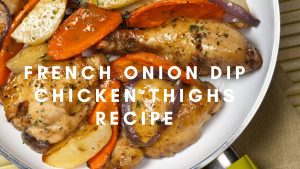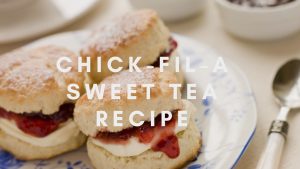I’ve always been a sucker for fried chicken. There’s something about that crispy, golden-brown crust and the juicy, flavorful meat that just hits the spot.
And when it comes to fried chicken, Pioneer Chicken Recipe stands out as a real crowd-pleaser. Maybe you’ve heard of it, or maybe you’ve even been lucky enough to try it, but if you haven’t – you’re in for a treat!
In this guide, I’ll spill all the secrets to making the best Pioneer Chicken right at home. We’ll cover everything from what makes it special to step-by-step instructions and pro tips that’ll have you frying chicken like a seasoned chef.
[toc]
Key Takeaways
- Pioneer Chicken is a style of fried chicken known for its crispy coating and flavorful seasoning.
- Brining your chicken is optional, but helps keep the meat juicy.
- Frying oil choice and temperature control are crucial for the perfect texture.
What is Pioneer Chicken?
Let’s get one thing straight: Pioneer Chicken isn’t just any fried chicken. It’s got a unique flavor and a satisfying crunch that sets it apart. Here’s what makes it special:
- The Coating: It’s all about that crispy, flavorful crust. Pioneer Chicken typically uses a combination of flour, cornstarch, and a blend of spices like paprika, salt, and pepper.
- The Technique: There are usually two dredging steps—a dry coat and a wet batter dip—that help create that signature extra-crispy exterior.
- The Flavor: Pioneer Chicken has a well-balanced flavor profile—savory, slightly spicy, and undeniably delicious.
Key Ingredients and Equipment
Before we dive into the cooking, let’s get our tools and ingredients ready:
Ingredients

| Type | Ingredients | Notes |
|---|---|---|
| Chicken | Whole cut-up chicken, bone-in thighs and breasts, or wings | A mix of parts is also great! |
| Dry Ingredients | All-purpose flour, cornstarch, paprika, salt, black pepper, garlic powder, onion powder | Customize the seasonings to your liking! |
| Wet Ingredients | Buttermilk, eggs | Substitute buttermilk with whole milk and a squeeze of lemon juice |
| Frying Oil | Canola oil, peanut oil, or vegetable oil | Choose oils with a high smoke point |
Equipment
| Item | Notes |
|---|---|
| Deep fryer or sturdy pot | A cast-iron skillet or Dutch oven are good options |
| Instant-read thermometer | Essential for ensuring the chicken is cooked to a safe temperature |
Pioneer Chicken Recipe (Step-by-Step)
Alright, let’s get cooking! Here’s a breakdown of the process:

Step 1: Brining (Optional, But Highly Recommended)
- Benefits: Brining helps keep your chicken incredibly juicy and flavorful, especially for larger cuts like whole chickens or breasts. Think of it as a flavor and moisture insurance policy!
- Basic Brine: Dissolve ¼ cup of salt in 4 cups of cold water. In a large bowl or container, submerge your chicken pieces in the brine solution.
- Brining Time: Aim for at least 30 minutes, but for deeper flavor penetration, you can brine for up to several hours or even overnight in the refrigerator. Just be sure to keep the chicken submerged and chilled throughout the brining process.
Pro Tip: If you’re short on time, don’t skip the brining altogether! Even a quick 30-minute brine makes a noticeable difference in the final texture and flavor of your chicken.
Step 2: Prepare the Dry Mix
- Spice Up Your Life! This is your opportunity to personalize the flavor profile of your Pioneer Chicken. In a large bowl, whisk together 1 cup of all-purpose flour, ¼ cup of cornstarch, and your chosen seasonings.
- Seasoning Inspiration: A classic Pioneer Chicken mix typically includes paprika, salt, black pepper, garlic powder, and onion powder, but feel free to experiment! Cayenne pepper for a kick, smoked paprika for a deeper smokiness, or a blend of Italian herbs are all fantastic options.
Step 3: Make the Wet Batter
- The Batter Bond: The wet batter acts as a glue to adhere the dry mix to the chicken, creating that signature crispy coating. In a separate bowl, whisk together 1-2 cups of buttermilk (or your DIY buttermilk substitute) with 2 eggs. The consistency should be thin enough to coat the chicken easily, but not runny.
Pro Tip: Worried about buttermilk? No problem! Substitute with an equal amount of whole milk mixed with a tablespoon of lemon juice or white vinegar. Let it sit for a few minutes to curdle slightly before using.
Step 4: Dredge the Chicken
- Double the Crunch (Optional): This step creates the extra-crispy coating that defines Pioneer Chicken.
- Dry Coat: Working in batches to avoid overcrowding the bowl, dredge each piece of chicken in the dry mix. Shake off any excess flour mixture.
- Wet Coat: Next, dip the chicken into the wet batter, ensuring it’s evenly coated.
- Double Dredge (Optional): For the ultimate crunch factor, repeat the dry coat and wet coat steps for each chicken piece.
Step 5: Fry the Chicken
- Oil Temperature is Key: This is a crucial step for achieving perfectly cooked chicken with a crispy, golden crust. Heat your chosen oil (canola, peanut, or vegetable oil) in a deep fryer or sturdy pot like a cast-iron skillet or Dutch oven to 350°F (175°C).
- Don’t Crowd the Pan: This is a recipe for unevenly cooked and soggy chicken. Fry the chicken pieces in batches to maintain the oil temperature. A good rule of thumb is to avoid filling the pan more than halfway with chicken.
- Temperature Talk: Here’s a guide for frying times based on chicken pieces:
- Bone-in thighs and breasts: 12-14 minutes
- Wings: 8-10 minutes
- Safety First! Don’t rely on guesswork – use an instant-read thermometer to ensure your chicken reaches the safe internal temperature of 165°F (74°C) before removing it from the oil.
Step 6: Drain and Rest
- Crispy Perfection: Transfer the fried chicken pieces to a wire rack set over a baking sheet. This allows excess oil to drip off, preventing it from becoming soggy and ensuring a beautifully crisp exterior.
- Let it Rest: Patience is key! Let the chicken rest for 5-10 minutes before serving. This allows the juices to redistribute, resulting in incredibly moist and flavorful chicken.
Tips for the Perfect Pioneer Chicken
Now that you know the basics, let’s unlock some secrets for the ultimate Pioneer Chicken experience:
- The Right Oil: Canola or peanut oil are top choices. They have a high smoke point so they won’t burn easily, and their neutral flavor lets the chicken’s goodness shine.
- Steady Temperature: The key to that golden crust without raw insides is the consistent oil temperature. Keep it around 350°F (175°C). An instant-read thermometer is your best friend here!
- Don’t Crowd the Pan: Frying too much at once lowers the oil temperature, making your chicken greasy instead of crispy. Work in batches!
- Spice It Up: Adjust the spice mix to your liking. Add cayenne pepper for extra heat, or smoked paprika for a deeper flavor.
Serving Suggestions
Pioneer Chicken is delicious on its own, but a few classic sides make the meal complete:
- Creamy mashed potatoes and gravy
- Tangy coleslaw
- Buttery biscuits
- Corn on the cob
- Mac and cheese
Variations on Pioneer Chicken
Once you’ve mastered the classic recipe, it’s time for some fun variations:
- Global Flavors: Play with different spice blends! A Cajun-inspired mix, a fiery Korean gochujang glaze, or a bright and herby Mediterranean twist could all be amazing.
- Baked Pioneer Chicken: Craving that crunch without all the oil? You can achieve a surprisingly close texture by baking. Coat the chicken as usual and bake at a high temperature (425°F/220°C) until golden and cooked through.
- Beyond Chicken: The Pioneer Chicken technique works surprisingly well with other proteins! Try it with fish fillets, tofu, or even cauliflower steaks.
Troubleshooting Common Problems
Even seasoned cooks run into the occasional chicken mishap. Here’s how to fix the most common issues:
| Problem | Solution |
|---|---|
| Chicken isn’t cooked through | Reduce the heat and cook for a longer time. Use an instant-read thermometer to be sure – 165°F (74°C) is the safe temperature for chicken. |
| The soggy or greasy texture | Your oil is too hot! Lower the temperature and continue cooking until the chicken is fully cooked. |
| Soggy or greasy texture | The oil wasn’t hot enough, or you overcrowded the pan. Be sure your oil is at the right temperature, and fry in batches. |
| Bland flavor | Amp up the spices in your dry mix, or try a flavored salt blend. If needed, season the chicken lightly with salt before battering. |
FAQs
Q: Is Pioneer Chicken the same as [other fried chicken style]?
A: Pioneer Chicken shares some similarities with other fried chicken styles, like Southern fried chicken. However, it typically has a slightly thicker, crispier coating and a more balanced spice profile.
Q: Can I make Pioneer Chicken without buttermilk?
A: Absolutely! While buttermilk is traditional, you can substitute it with whole milk mixed with a tablespoon of lemon juice or white vinegar. Let it sit for a few minutes to curdle slightly before using.
Q: What’s the best way to reheat Pioneer Chicken?
A: For the crispiest results, the oven is your best bet. Preheat your oven to 400°F (200°C) and bake the chicken on a wire rack set over a baking sheet for 10-15 minutes, or until heated through. Avoid the microwave, as it will make the chicken soggy.
Q: Is Pioneer Chicken gluten-free?
A: Traditional Pioneer Chicken isn’t gluten-free due to the flour in the coating. However, you can easily make a gluten-free version by substituting all-purpose flour with a gluten-free flour blend or rice flour.
Q: Can I make Pioneer Chicken in an air fryer?
A: Definitely! Air fryers are a great alternative for a healthier take on Pioneer Chicken. Lightly coat your chicken with cooking spray and cook at around 400°F (200°C) for 15-20 minutes, flipping halfway through, or until cooked through.
Q: How can I store leftover Pioneer Chicken?
A: Leftover Pioneer Chicken is best stored in an airtight container in the refrigerator for up to 3-4 days. Reheat using the oven method for the most satisfying results.
Q: Can I freeze Pioneer Chicken?
A: Yes, you can freeze both raw, prepped Pioneer Chicken (breaded and ready to fry) and cooked Pioneer Chicken. Freeze the chicken in a single layer on a baking sheet, then transfer to airtight freezer bags. Properly frozen Pioneer Chicken can last for several months.
Pioneer Chicken Recipe Conclusion
Whether you’re a fried chicken aficionado or a curious newcomer, Pioneer Chicken is a dish worth mastering. Its satisfying crunch, balanced flavor, and versatility make it a crowd-pleaser at family dinners, picnics, or anytime you’re craving some seriously delicious comfort food.
So, the next time you get that fried chicken hankering, put on your chef’s hat and try making Pioneer Chicken at home.
You and your taste buds won’t be disappointed! Let me know how your Pioneer Chicken adventure turns out!




1 thought on “Pioneer Chicken Recipe: Unbelievable Taste”